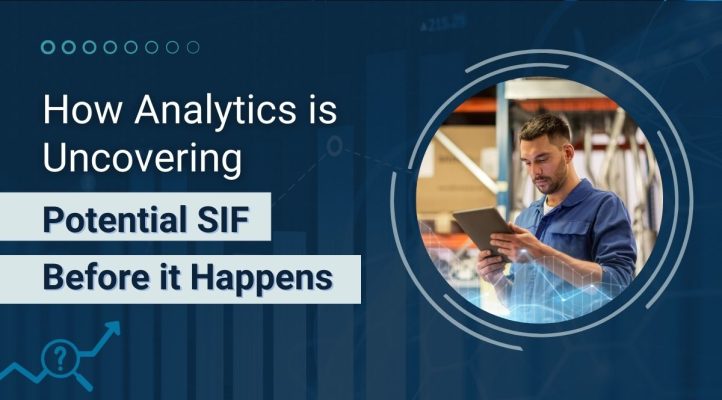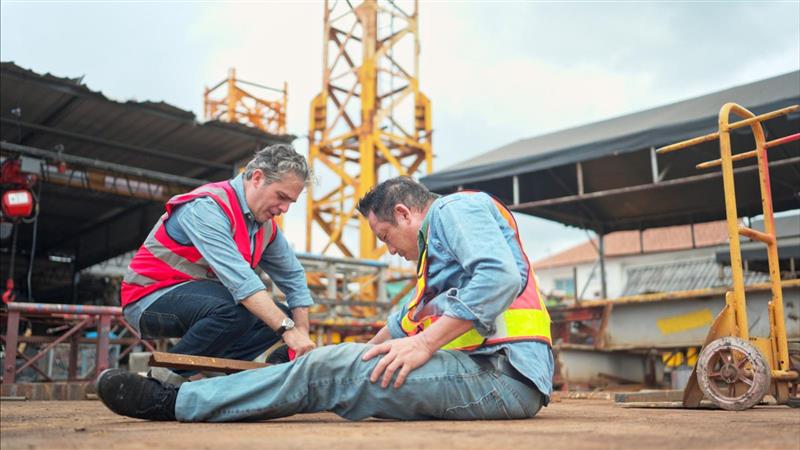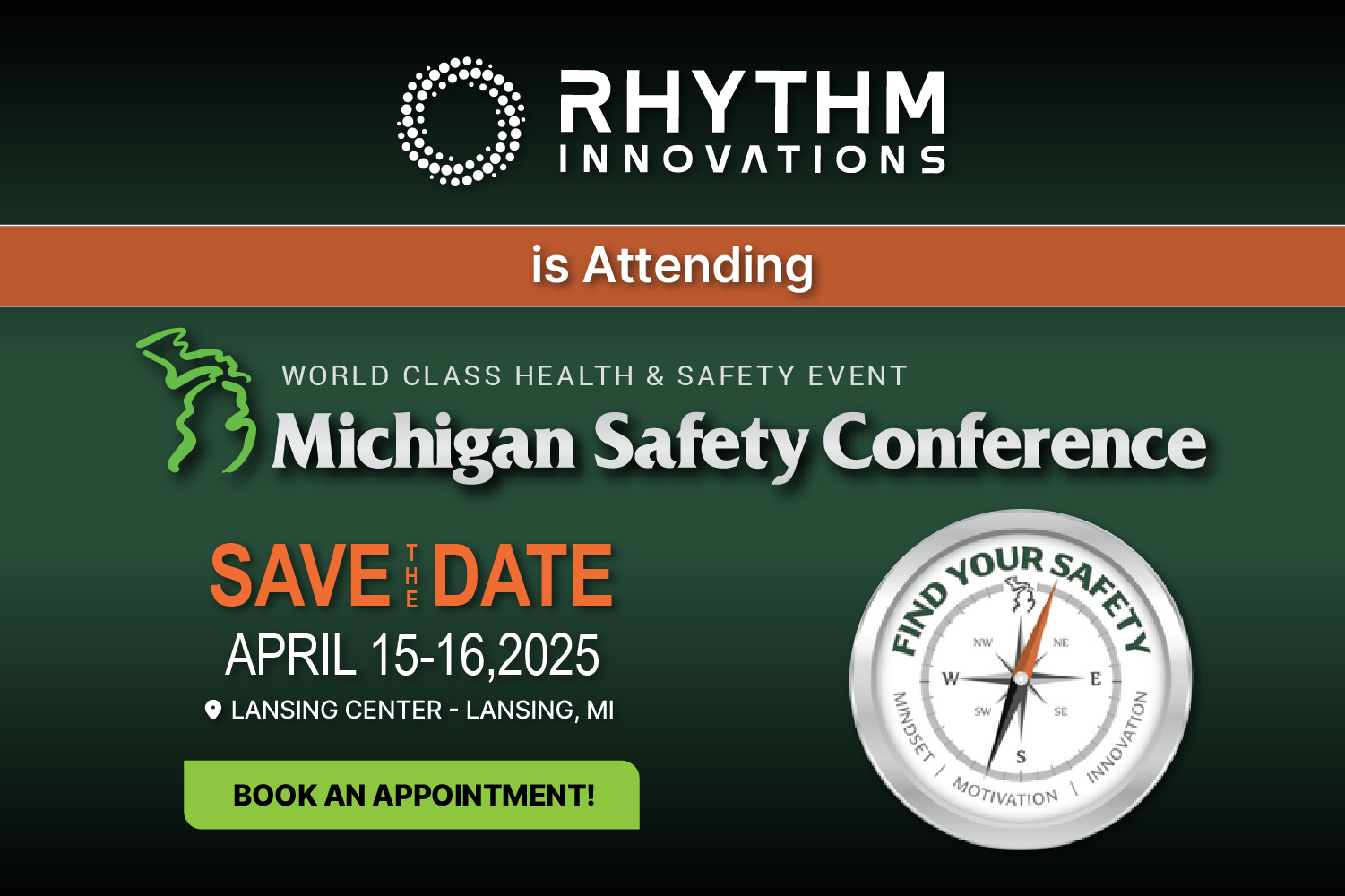How Analytics is Uncovering Potential SIF Before It Happens?

Ensuring workplace safety is a fundamental responsibility for organizations, yet Serious Injuries and Fatalities (SIFs) remain a persistent challenge across industries. Despite established safety protocols and compliance measures, high-risk situations can escalate unexpectedly resulting in injuries and near misses with sever outcomes. The key to preventing these incidents is identifying risks before they become accidents. Predictive analytics transforms safety management by enabling organizations to anticipate potential SIF events and implement proactive measures to protect their workforce.
The Power of Predictive Analytics in Workplace Safety
Predictive analytics harness historical data, machine learning, and real-time monitoring to identify patterns that indicate potential hazards. Unlike traditional safety measures that react to incidents after they occur, predictive analytics offers a proactive approach, helping companies to:
- Detect early warning signs of unsafe conditions.
- Assess risk factors associated with human behavior, equipment failure, and environmental conditions.
- Implement targeted interventions to mitigate potential SIF events.
By analyzing vast amounts of data, organizations can pinpoint trends and correlations that may not be evident through conventional safety assessments. But how do we harness all the data which surrounds us relating to conditions and behavior?

Key Statistics on SIF Prevention with Predictive Analytics
Analytics plays a crucial role in uncovering SIF potential before incidents occur, providing valuable insights for workplace safety. Key findings include:
- SIF Exposure: When analyzed using a consistent methodology, 21% of all reported cases across multiple organizations contained SIF exposures.
- Nonserious Injuries: The likelihood of nonserious injuries with SIF exposure potential varies among companies, with rates ranging from 10% to 36%.
- Workplace Fatalities: In 2019, the number of workplace SIFs peaked at more than 5,000—the highest recorded total since 2007.
- AI-Driven Detection: AI-assisted SIF detection tools analyze audits, work observations, incidents, and CAPAs to uncover hidden safety risks.
- Machine Learning Models: Advanced predictive models process data from sensors, equipment, and other sources to detect patterns indicative of potential hazards.
- Communication Centers: Command centers and communication towers help us to look at data and intervene prior to an incident occurring.
Identifying High-Risk Situations Before They Escalate
One of the most significant advantages of predictive analytics is its ability to uncover hidden risk factors. Companies can analyze historical incident reports, near-miss data, and operational metrics to:
- Identify specific job tasks, locations, or times of day associated with increased risk.
- Recognize patterns that precede SIF events, such as repeated minor incidents or equipment malfunctions.
- Evaluate employee fatigue, stress levels, and compliance with safety protocols in real-time.
- Recognize which controls would have prevented exposure to an unsafe condition.
With this insight, organizations can develop proactive strategies to address these risks before they lead to serious injuries or fatalities.
Enhancing Safety Measures with Data-Driven Decisions
Integrating predictive analytics into safety programs enables organizations to shift from reactive compliance to proactive risk management. Some key benefits include:
- Automated Risk Alerts: AI-driven systems can trigger real-time notifications when risk thresholds are exceeded, allowing safety teams to intervene promptly.
- Data-Backed Safety Training: Organizations can tailor training programs to focus on specific hazards and behaviors by understanding which areas pose the highest risk.
- Enhanced Equipment Maintenance: Predictive analytics can identify patterns in machinery performance, reducing the likelihood of failures that could contribute to SIF incidents.
By leveraging data-driven insights, companies can strengthen their safety culture and reduce the frequency and severity of workplace accidents.
The Future of Workplace Safety
As technology advances, predictive analytics will play an even more significant role in safety risk management. Organizations that adopt data-driven strategies will prevent SIF events and enhance operational efficiency and workforce well-being. By uncovering risks before they turn into tragedies, predictive analytics is shaping the future of workplace safety—one insight at a time.
With the power of analytics, organizations can move beyond compliance and towards a proactive, data-driven approach to safeguarding their employees. The question is no longer whether predictive analytics can enhance safety but how soon organizations will implement it to protect their workforce.
How Rhythm Innovations is Driving Predictive Safety Solutions
Rhythm Innovations is a leader in predictive safety solutions, providing organizations with advanced analytics tools to reduce SIF risks. Our platform continuously collects and analyzes data, offering real-time risk monitoring to detect early warning signs before they escalate.
We use AI-driven insights to identify workplace safety trends, allowing for proactive intervention. Customizable dashboards provide clear visibility into safety risks, incident reports, and compliance metrics, supporting informed decision-making.
Our mission is to empower companies with the tools and insights to protect their workforce and foster a culture of continuous safety improvement.
Conclusion
Predictive analytics is revolutionizing workplace safety by helping organizations identify and mitigate risks before they result in serious injuries or fatalities. By adopting advanced analytics tools, businesses can create safer work environments, enhance compliance, and improve overall operational efficiency. Rhythm Innovations is committed to driving this transformation by offering innovative solutions that proactively empower companies to manage safety risks. Contact Us Today!


